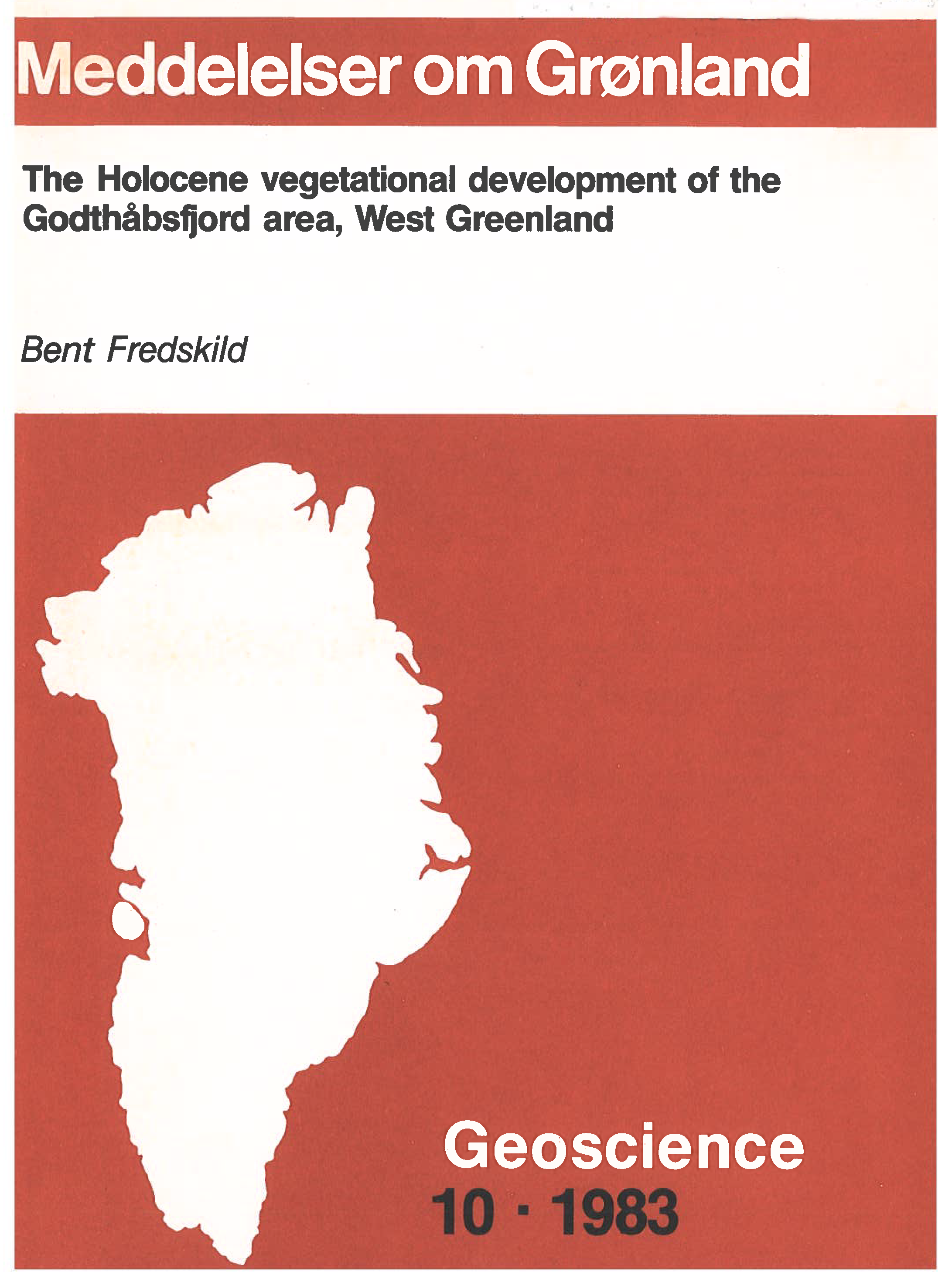The Holocene vegetational development of the Godthåbsfjord area, West Greenland
DOI:
https://doi.org/10.7146/moggeosci.v10i.140322Abstract
Holocene pollen and macrofossil diagrams from four low arctic lakes at Godthåbsfjord are presented. Each core has been divided into radiocarbon-dated palaeovegetation zones, based on the remnants of terrestric plants. The PY zones are physiognomically similar, but differences as to the composition and frequency of species can be seen between the two lakes in the interior and the two lakes from the outer coast area. The vegetation which invaded the deglaciated soil was open but rich in species, and 64 species or genera have been determined from the pioneer stage (c. 9400 - 8000 B.P.). Open soil plants were dominating, but dwarf-shrubs entered the vegetation, with species from snow-patches and snow-covered heaths dominating in the beginning. By 8000 B.P. Salix glauca and S. herbacea immigrated, and gradually the pioneer plants and chionophilous dwarf-shrubs were decimated. This Salix-Cyperaceae stage lasted until c. 6300 B.P., when Betula nana spread all over the area within a few centuries. A Betula nana-Juniperus stage lasted until c. 3500 B.P. In the subcontinental interior this was followed by an Alnus crispa-Berula nana stage, which in turn was replaced by a Beutla nana-Ericales stage around 1800 B.P. Alnus has never been able to grow at the maritime outer coast, where Betula, Cyperaceae, Empetrum and other Ericales dominated after c. 3500 B.P. Later on, Empetrum, Cypcraceae and snowbed plants gradually spread at the expence of Betula nana.
After the deglaciation the temperature increased, reaching today's values between 8000 and 7500 B.P. At which time during the coming millennia the temperature curve peaked is not known, but it may have been fairly late, presumably during the Benita nana-Juniperus stage. Major climatic changes are registered in the interior at 3900-3600 and 1800 B.P., and at the outer coast at c. 3600 and 2500-2000 B.P.
From around 8000 B.P. the development of the lakes is fairly independent of the physical conditions of the surroundings, being dependent mainly on the trophic stages of the lakes. These pass through a succession: highly productive, eutrophic – less productive, mesotrophic - very poor, oligotrophic. As well as in the flora and fauna, these stages are reflected in the sediment, which at the beginning was a clay gyttja followed by a jelly-like gyttja and, finally, by a loose, watery gyttja consisting mainly of precipitated humus. Chemical analyses of one of the cores confirm the oligotrophication.
The pollen influx in the pioneer stage is less than 100 grains per cm2 per year, increasing during the Hypsithermal to c. 300 in three of the lakes and c. 1000 in the richest one, but since then the influx decreases somewhat upwards.
A survey of the immigration or first appearance of some species palynologically important to South and West Greenland shows big time lags in the spreading of some species, e.g. Thalictrum and Angelica, whereas others, like Empetrum and Juniperus, have a more effective dispersal capacity.

Downloads
Published
How to Cite
Issue
Section
License
Coypyright by the authors and the Commision for Scientific Research in Greenland / Danish Polar Center. No parts of the publications may be reproduced in any form without the written permission by the copyright owners.

